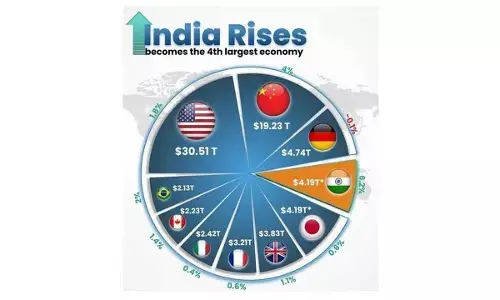MyVoice: Views of our readers 29th May 2020

MyVoice: Views of our readers 29th May 2020
Happy National Statistics Day!
"He is the shining lighthouse of the mathematical tradition of India," said Vice president M Venkaiah Naidu about well-known statistician Prashant Chandra Mahalanobis. We celebrate National Statistics Day every year on June 29.
We commemorate the achievements of Prof Prashant Chandra Mahalanobis on this day and create awareness among people about the importance of Statistics. Mahalanobis was born on 29 June 1893 in West Bengal.
He is known as the Father of Indian Statistics. He is well known for Mahalanobis distance, which is a statistical measure, which provides a way to measure cluster analysis. He was also a member of the Planning Commission.
He gave the Two Sector Input-Output Model for the Second Five Year Plan which was famously called as the Basic Industry Strategy of economic growth. He was also the founder of Indian Statistical Institute.
During this pandemic situation, Statistics plays an important role in our fight with Covid-19. Statistics is an important tool for compiling analytical reports and to report the facts about the situation.
It helps us to determine the spread of an epidemic. National Statistics Day was first celebrated on 29 June 2007. This is the 14th National Statistics Day.
The government has decided to celebrate this day to spread awareness about the importance of statistics in our daily life. So, as citizens of India, it is our responsibility to realise the importance of statistics. Happy National Statistics Day!
Kalyani Jahnavi, Shaikpet, Hyderabad
Let Indian Army do their job
In the Galwan area, latest satellite imagery proves massive construction efforts going on in Chinese side. Also, some construction on PP14 has come up, the infamous site of battle on the night of June 15.
This is a very critical point for China. PP14 is right on the location that gave China an excellent line of sight and observation ability into Indian side. I'm sure they will continue to build on it, irrespective of Indian resistance.
The construction leading to this point is also going on at a large scale, proving that China aims to fortify and build up in this region. Indian, Russian, and Chinese delegations would have met this week and discussed in detail how to be better neighbours.
China's response has been moving troops to the Depsang area. It speaks volumes about the success of these meetings. PM Modi cannot behave like Xi Jinping because we have a democracy, and the government and the PM are answerable to the public.
The next best move to lead the country in one direction would be to provide some autonomy and control to the armed forces to manage the issue. They would be the best contenders in the country to provide real, workable and viable solutions to the crisis.
If it is the Olive Greens that are going to fight and defend the borders, even at the risk of losing their lives, why should they not be given the freedom to act the way they want, without any bureaucratic and political stifling and media glare. I'll reiterate, 'Keep calm and trust your Army'.
Raj Kumar J, Hyderabad
China can indulge in virtual warfare
It is time we need to be wary of Chinese movements. The PLA would start the war in the virtual and not physical domain, which would affect not a defined battlefield or battlespace, but the whole nation.
The war fought in the electro-magnetic spectrum (EMS) can destroy, disrupt or disable communication from the Prime Minister's Office to the frontline soldiers without firing a single shot. Without communication, there would be little command and control.
The reality is that the side which cannot win the war in the EMS cannot win the overall war. Most devices that constitute modern information and communication technologies send and receive information encoded in electromagnetic (EM) radiation.
EM radiation is a form of energy, like heat and sound, and radiation of different wavelengths (or frequencies) occupy a continuous spectrum called the EM spectrum, or EMS.
Parts of the spectrum that human technologies have found useful – whether to measure or manipulate – include radio waves, microwaves, infrared waves, visible light, ultraviolet radiation, X-rays and gamma rays.
These are types of EM radiation that differ only in their wavelengths. For example, radio waves have a longer wavelength while gamma rays have a shorter wavelength, and this feature determines their applications.
Saki Chinmayee, Hyderabad















